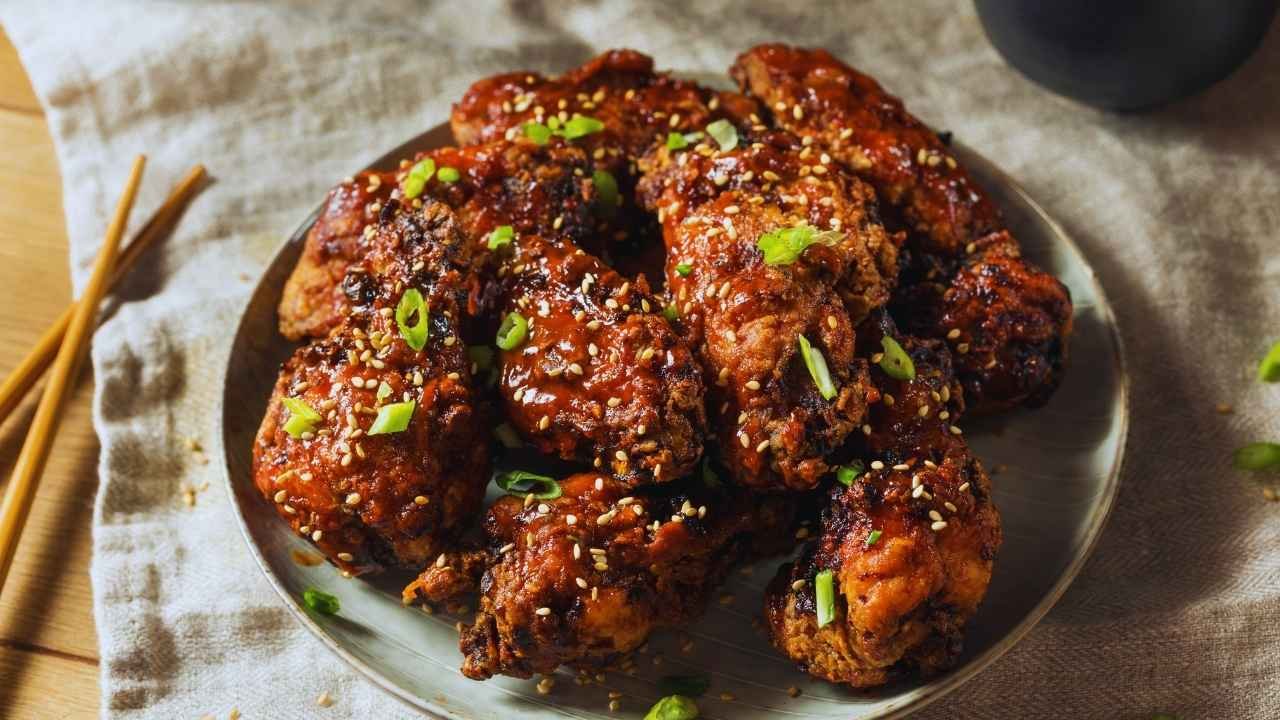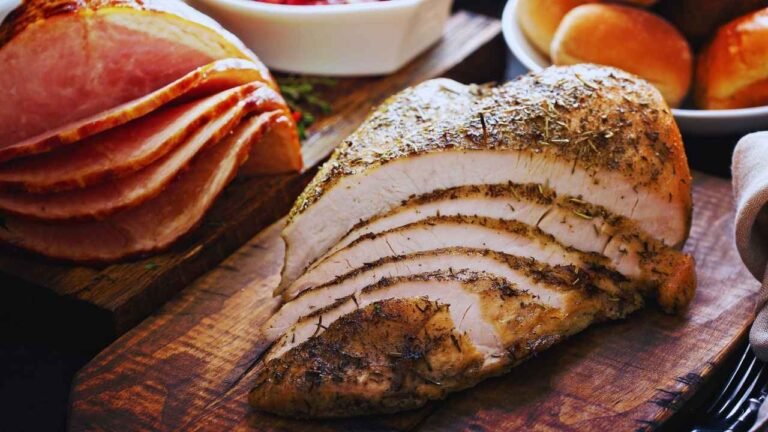How to Make Korean BBQ Chicken: A Restaurant Secret Recipe (Ready in 30 Minutes)
Want restaurant-style Korean BBQ chicken but think it’s too difficult to make at home? Well, this korean bbq chicken recipe begs to differ – done in under 30 minutes with a near perfect 5-star average from 88 reviews.
Crispiness on the outside, succulence on the inside: This recipe has you covered. The trick here is a 5 minute marinade of soy sauce, garlic, ginger and the key player — Gochujang (Korean chili paste) — that is the secret to that sweet, tangy and spicy notes.
But here’s what makes this a special recipe: It can be dressed up or down. You can customize the spice, serve it with rice or kimchi or any other like-minded side dish, and you can use the same marinade on other proteins. Are you ready to make restaurant-style Korean BBQ chicken at home? Let’s get cooking!
Essential Ingredients for Authentic Korean BBQ Chicken
First, you will need to procure the ingredients that underpin traditional Korean BBQ chicken. Knowing these components is what helps you get that restaurant-quality taste.
Traditional Korean Marinade Components
These are your core ingredients for Korean BBQ chicken marinade:
- Soy sauce (3 tablespoon) — provides the umami base
- Chopped garlic (1 tablespoon) — gives it an aromatic note
- Grated ginger (1 teaspoon) — adds warmth
- Brown sugar (1 tablespoon) — helps with inherent caramelization
- Sesame oil (1 tablespoon) — provides nutty undertones
Plus rice wine, lemon juice and honey to complete the traditional marinade profile. Combine these elements to create everything from sweet to savory to tart in just the right proportion.
Substitute Options for Hard-to-Find Ingredients
For those ingredients that may be hard to source, though, here are practical substitutions:
- Rice wine: Substitute mirin or white wine
- Korean corn syrup: Regular corn syrup will do fine
- Cooking wine: Use more lemon juice in its place
Secret Restaurant Sauce Ingredients
The distinguishing factor in restaurant-style Korean BBQ chicken lies in these special ingredients:
Real Korean restaurants use Gochujang (Korean chili paste) and Gochugaru (Korean chili flakes) for their signature spicy-sweet profile. Plus, the pro version features dark brown sugar and rice wine vinegar for depth.
For the perfect restaurant-style sauce, combine:
- 1 cup soy sauce
- ¾ cup dark brown sugar
- 2 tablespoons minced garlic
- 1 tablespoon rice wine vinegar
For that glossy restaurant finish, professionals add a cornstarch slurry (1 tablespoon cornstarch mixed with 1 tablespoon water) in the final few minutes of cooking. This technique gives you that thick, glossy coat that clings just right to the chicken.
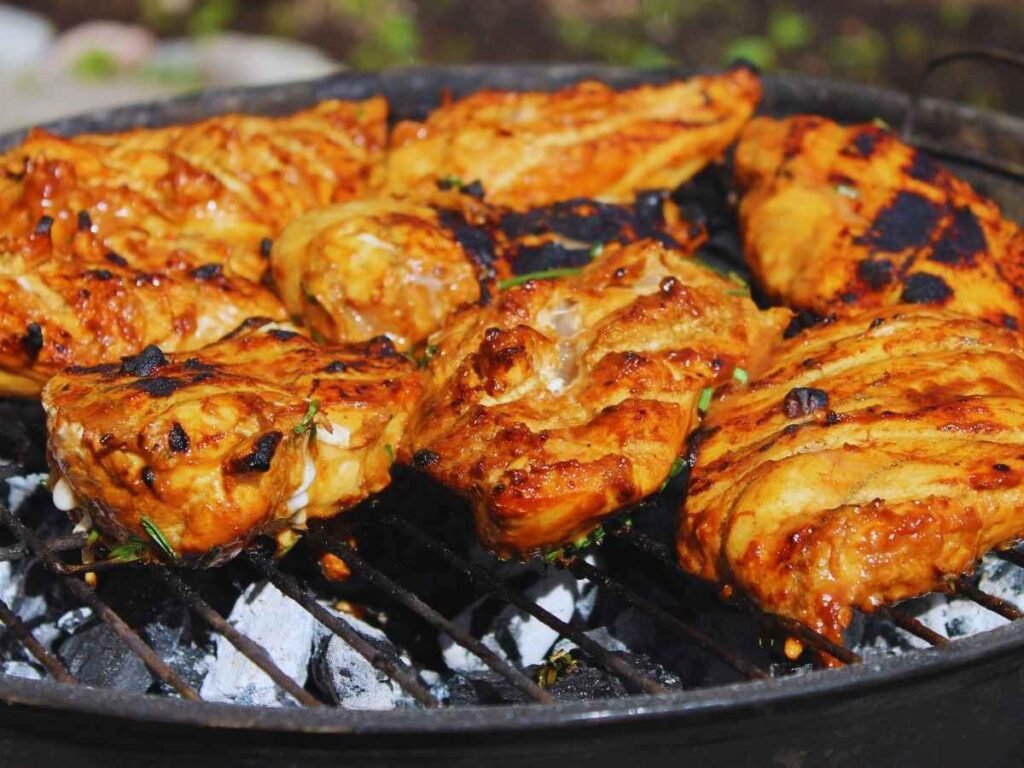
Restaurant-Style Marinade Techniques
There are some tricks to marinating the chicken at the right time with the right technique to get the authentic Korean BBQ chicken essence. These are methods that professional chefs have spent years perfecting — and now you can replicate their success at home.
Professional Marinating Timeline
The secret to perfect Korean BBQ chicken is all in how long you marinate. To marinate the chicken, let it sit overnight in this marinade for best results, recommend a minimum of 3 hours. But if you want the most flavor penetration, let it marinate for 8 hours.
Follow these professional timing guidelines:
- Small, bite-sized pieces: 3–4 hours minimum
- Bigger chicken parts: 4-8 hours
- Plain chicken thighs: 8-12 hours
- Outdoor grilling cuts: 12–24 hours
Temperature and Storage Tips
Temperature is crucial to both safety and flavor development. Here are some key storage tips:
- Always keep chicken marinating in the fridge, never at room temperature
- Store leftover marinade in an airtight container or zipper bag
- For meal prep, freeze chicken in marinade, up to 2 months
- Defrost marinated chicken that has been frozen in the refrigerator, completely, before cooking
Double-Marinating Method
Chefs also sometimes use a double-marinating technique to ramp up flavors. The first step is to apply the base marinade and allow it to penetrate the meat. Then, paint on a second layer of marinade as it cooks.
The double-marinating method: Only reserve some of your marinade before adding raw chicken. And use it when cooking, adding this reserved marinade by the tablespoon whenever the pan feels dry. This technique is especially useful when cooking down sugar and honey, as it allows to prevent burning while simultaneously adding layers of flavor as the sugar and honey begins to caramelize.
Importantly, you can make the marinade in advance and keep it separate. This method lets you initiate the marinating process quickly when the time comes. As a result, you’ll have a little more leeway in your meal prep schedule, all with that restaurant-quality flavor.
As always, keep an eye on your chicken while cooking, as the sugars in Korean BBQ marinades can burn quickly. Especially with this dual marinating technique, you might need to tweak your heat to achieve the proper caramelization without burning.
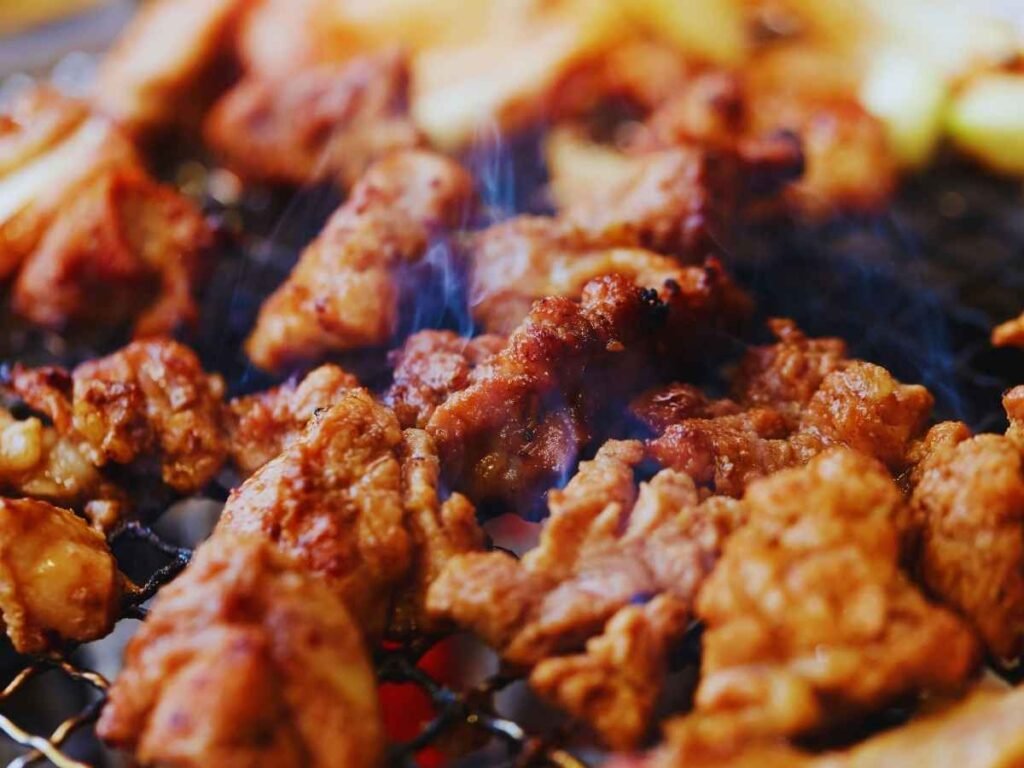
Mastering the Korean BBQ Chicken Cooking Process
Mastering the perfect Korean BBQ chicken requires precision temperature control and timing. Professional chefs know these techniques, and now you can do what they do at home.
Perfect Temperature Control
For juicy, perfectly cooked chicken, it’s all about the right temperature. For best results, cook your chicken until it reaches an internal temperature of 158°F for a firm but tender texture. So here are the temperature rules of thumb for this season:
- Grill temperature: Medium for an even cook
- Target internal temperature: Final temp of 165°F
- Rest temperature: Allow 5 minutes of resting after cooking
Timing Each Stage
The timing for which perfect results are achieved depends on the method you are using. Here’s a full guide, for allways of cooking:
Grilling Method:
- Grill with the lid close for about 5-7 minutes per side
- Baste with sauce every 2-3 minutes
- Total cooking time: 10–14 minutes
If cooking in the oven, preheat to 375°F and cook about 25-30 minutes. For example, you are slowly cooking over lower temperatures to avoid burning, plus ensuring cooking through.
Achieving Restaurant-Style Char
Here’s how to get that elusive restaurant-quality char without the burning, according to the pros. The first: Make sure your grill is really well-oiled. So use thinly pounded pieces of chicken, so it cooks through evenly before the skin burns.
The double-cooking approach yields great results. Begin by cooking the chicken almost all the way, then lather on more sauce and put it back on high heat for a moment. This technique is what gives it that signature caramelized crust while keeping it moist inside.
For an even crisper skin, put the chicken skin-side up on the grill for 1 to 2 minutes. Sure, baste, turn and cook another 1-2 minutes. Repeat this process on both side until you’ve reached your ideal char level.
Relate that the sugars in Korean BBQ sauce are very easy to burn. So, to avoid everything being burnt keep an eye on the cooking and if necessary reduce the heat. Lastly, rest chicken for 5 minutes before serving to redistribute juicy juices.
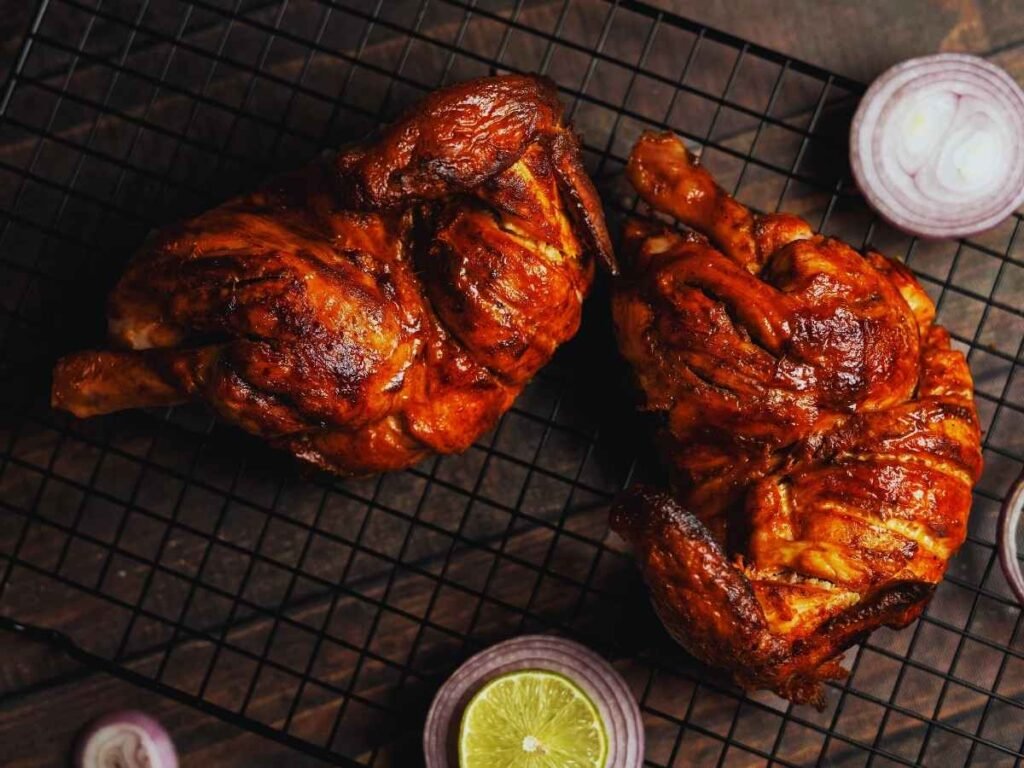
Customizing Heat Levels
One of the great things about Korean BBQ chicken is that you can make it as spicy or mild as you like to suit your taste. In fact, the final dish isn’t that spicy at all, really, so you can ramp up the spices or tone them down to your taste.
Mild to Extra Spicy Variations
Your ideal level of heat begins with managing the amount of gochujang (Korean chili paste) in your dish. Modify your sauce for different levels of heat like this:
- Mild: Replace with 2 tablespoons gochujang
- Medium: Add 1/2 cup gochujang
- Heat: Add more gochugaru (Korean chili flakes)
- Extra Spicy: Put in both the gochujang and extra chili flakes
Balancing Sweet and Heat
Balancing sweetness and heat perfectly is not easy as it depends on your ingredient. the soy sauce with garlic and ginger gives it an irresistible aroma, but of course the chili level can be adjusted without sacrificing the flavor.
To maintain the authentic taste while controlling spiciness:
- Sweeten the Heat with Honey or Brown Sugar
- Add rice vinegar for tang
- Include sesame oil for depth
These types of dishes might range in heat level from Korean cuisine as evidenced by the 300% growth of Korean-inspired BBQ entrées on restaurant menus in the past four years.
Regional Style Adaptations
BBQ techniques have developed uniquely in different regions in Korea’s long history, which can be traced back to the Goguryeo era (37 B.C. – 668 A.D.) Variations today by region reflect those preferences and the influence of cooking methods.
Modern Korean BBQ restaurants often feature unique adaptations:
- Traditional lettuce wraps
- Shiso leaf wraps
- Dduk bossam Rice paper wraps
- Pickled daikon radish wraps
You can do the same for BBQ chicken at home, bringing in regional details. Each restaurant usually comes up with its own iterations of the dipping sauces, so you can fine-tune seasoning and heat to your liking.
The heat levels simply scratch the surface of the versatility of Korean BBQ chicken. You could also grill assorted vegetables with your chicken, like onions, winter squash or mushrooms. This versatility makes it well-suited for both traditional Korean-style dishes and fusion interpretations.
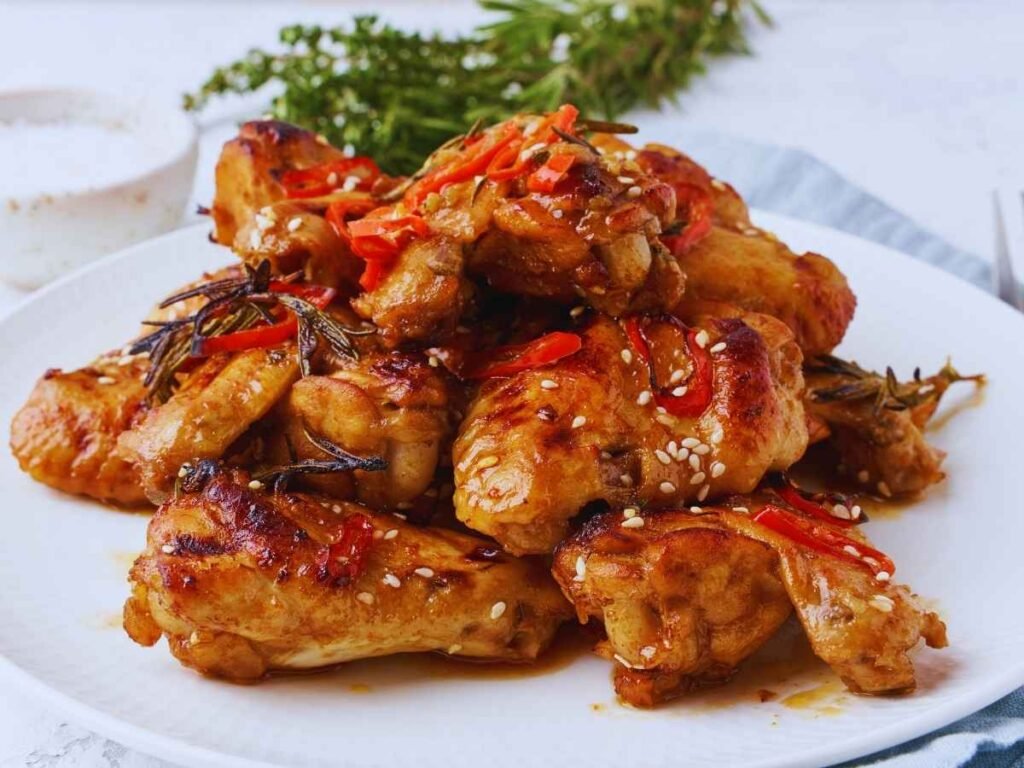
Professional Plating and Serving
The first of these is that this recipe for Korean BBQ chicken is a very worthy at-home version of something you might find in a restaurant, in that it offers the kind of flame-kissed, charred goodness you expect when you sit down for Korean BBQ, and, even better, it is one of those meals whose presentation can go a long way toward making a weeknight dinner feel like a restaurant quality experience. So let’s find out how to get that restaurant-quality finish that will make your dish Instagram-worthy.
Restaurant-Style Presentation
The art of professional plating transforms your Korean BBQ chicken into a visual masterpiece. In essence, follow these steps for an impressive presentation:
- Position steamed white rice as your base
- Place chicken pieces in an overlapping fashion
- Spoon remaining sauce over the top
- Top with chopped green onions and sesame seeds
- We plant new things for color contrast
Essential Side Dishes
Korean BBQ chicken has no shortage of complementary sides that enhance flavor and presentation. Along with the main dish, serve these traditional side dishes:
- Fresh vegetables and salads:
- Chopped Asian salad
- Roasted vegetable medley
- Crunchy cucumber slices
Starchy sides:
- Jasmine rice
- Cellophane noodles
- Asian spaghetti salad
Just to demonstrate versatility, you can serve that chicken on Bibb lettuce when you want a low-carb option. Also, think about toppings that lend to traditional Korean components like kimchi, which provides rather authenticity, but, also, depth to your meal.
Sauce Pairing Guide
The sauces you choose to accompany your Korean BBQ can make or break your experience. First, prepare some of these essential sauce combinations:
Classic Dipping Sauce:
- Sauce of soy and sesame oil
- Spicy gochujang mixture
- Sweet and tangy combination
Coolers: Serve cucumber slices alongside spicy versions to cool the palate. This allows for a fairly balanced dining experience overall.
Garnishing Tips:
- Yield with sesame seeds widespread
- Brighten it with fresh cilantro
- Dot it with the green onions for both color and flavor
For best enjoyment, serve up your Korean BBQ chicken as soon as you can, while the sauce is still glossy and the garnishes are fresh. But most importantly, don’t forget that part of the experience of going out to dinner is what that food looks like! In other words, the tastiest chicken can be made more appetizing with careful plating and a good choice of sides.
For outdoor entertaining, try serving the chicken on skewers. In such situations, you’ll want to give them a few more napkins and make sure any accompaniments are within easy reach of your guests.
Conclusion
Korean BBQ chicken that tastes like a restaurant in your own kitchen. Armed with the right ingredients, marinating techniques and temperature control knowledge, you’ll be grilling perfectly charred, juicy chicken every time.
Keep that in mind — the devil is in the details, whether getting your ingredients right or finding appropriate substitutes for them, timing your marinade perfectly, or nailing that signature caramelization. Most important, this shapeshifter can be endlessly customized, whether it’s to the heat level, the accompanying sides or the way you plate.
Just get the basic recipe down and learn the techniques you’ll soon be serving up Korean BBQ chicken that can stack up against your favorite restaurant’s version with confidence. Your friends and family will be begging for seconds after they try your perfectly balanced sweet-spicy-savory concoction.
How to Make Korean BBQ Chicken: A Restaurant Secret Recipe (Ready in 30 Minutes)
Course: DinnerCuisine: KoreanDifficulty: Easy4
servings10
minutes20
minutes350
kcalThis Korean BBQ Chicken recipe is better than restaurant variety, seriously! It’s sweet, savory, spicy, and gloriously caramelized all thanks to the bold marinade featuring Gochujang and sesame oil. Exceptional grilled or sautéed, and perfect served with rice, kimchi, or lettuce wraps.
Ingredients
1.5 lbs boneless chicken thighs
3 tbsp soy sauce
1 tbsp chopped garlic
1 tsp grated ginger
1 tbsp brown sugar
1 tbsp sesame oil
1 tbsp rice wine or lemon juice
1 tbsp honey
2–4 tbsp Gochujang (adjust to taste)
1 tsp Gochugaru (optional)
1 tbsp cornstarch + 1 tbsp water (optional slurry)
Green onions & sesame seeds for garnish
Directions
- Make Marinade: Mix soy sauce, garlic, ginger, sugar, sesame oil, rice wine, honey, Gochujang, and Gochugaru.
- Marinate: Coat chicken and refrigerate 3–8 hours or overnight.
- Cook: Grill or pan-fry chicken 5–7 mins per side until cooked. Baste with extra marinade.
- Optional Sauce: Simmer leftover marinade with cornstarch slurry for a sticky glaze.
- Serve: Rest chicken 5 mins. Slice and garnish with green onions and sesame seeds.
Recipe Video
Notes
- It’s best to marinate the chicken at least 3 hours (or overnight) for the best flavor. Make sure to watch it while it’s cooking — Korean BBQ sauces with sugar in them can burn easily, so keep your heat medium and baste it often.
FAQs
How long do you need to marinate chicken in Korean BBQ for it to be flavorful?
Marinate your chicken for a minimum of 3 hours for ideal taste. Even better, recommend marinating your chicken (or the biggest pieces of it, like whole chicken thighs) for up to 8 hours: more time means more flavor penetration.
What goes into an authentic Korean BBQ chicken marinade?
Soy sauce, minced garlic, grated ginger, brown sugar, and sesame oil are key ingredients. To make it even more authentic, you can add Gochujang (Korean chili paste) and Gochugaru (Korean chili flakes) to create the signature spicy-sweet profile.
How to add more heat to korean bbq chicken?
You can adjust the heat by changing the amount of Gochujang in your dish. Use 2 tablespoons for mild flavor, add 1/2 cup for medium, and mix Gochujang with more chili flakes for extra spicy. You could also counteract the heat with honey or brown sugar.
How do you get that restaurant-grade char on Korean BBQ chicken?
For that coveted char, apply the double-cooking method. Prepare the chicken almost to doneness and put more sauce on it and return it for a moment to the high heat. To crisp the skin, alternate cooking the chicken skin-side up and down, basting with sauce each time.
What common side dishes are served with Korean BBQ chicken?
Common accompaniments include steamed white rice, kimchi, chopped Asian salad, cucumber wedges and cellophane noodles. For a low-carb version, serve the chicken on Bibb lettuce wraps. Be sure to top with sesame seeds and green onions for flavor and aesthetics.

